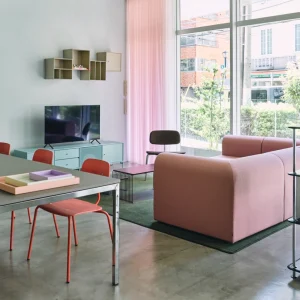The three-storey facility at Gigiri in Nairobi will house the new offices of the UN Environment Programme (UNEP) and the UN Human Settlements Programme (UN-HABITAT). The building has been designed as a model of green architecture in Africa and is said to be the first solar energy powered United Nations office building in the world. It comprises comprise four buildings that can accommodate 1,200 staff.
The energy-neutral building complex features automated low-energy lighting for workspaces, energy-efficient computers and water-saving lavatories. Rainwater is collected from the roofs to be used at the fountains and ponds at the four entrances. The sewage of the building is also treated in an advanced aeration system and recycled for irrigating the landscaped compound. The building also features 6,000 square metres of solar panels and eco-friendly paint.
A central atrium is featured inside the building and makes maximum use of natural light. Each office area features a translucent roof panel made of toughened glass, enabling natural light to penetrate down to the ground floor. The new building also uses low-energy bulbs and light detection controllers, which are expected to provide savings of up to 70% on lighting costs. The photovoltaic panels on the roof generate enough power to run computers, lights, cafeterias and other areas of the building.





